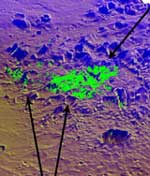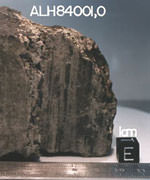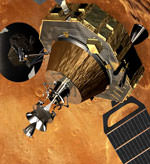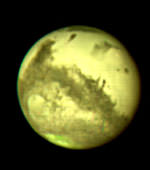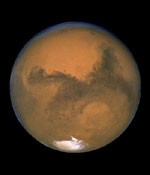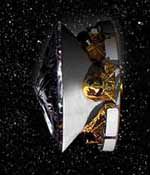
Image credit: NASA/JPL
NASA engineers have been working through a problem with one of the Mars rovers currently traveling to the Red Planet, and they think they’ve got a solution. Back in August, engineers detected that Spirit’s M?ssbauer spectrometer – a device for identifying iron-bearing rocks – was sending back incorrect readings. They’ve been able to compensate for the readings, so long as Spirit continues to behave on Mars as it’s working right now. The rovers will land on Mars in January 2004.
A series of tests of one of the science instruments on NASA’s Mars Exploration Rover Spirit has enabled engineers and scientists to identify how to work around an apparent problem detected in August.
Tests now indicate that all of the science instruments on both Spirit and its twin, Opportunity, are in suitable condition to provide full capabilities for examining the sites on Mars where they will land in January.
Spirit’s M?ssbauer spectrometer, a tool for identifying the types of iron-bearing minerals in rocks and soil, returned data that did not fit expectations during its first in-flight checkup three months ago. A drive system that rapidly vibrates a gamma-ray source back and forth inside the instrument appeared to show partial restriction in its motion.
“The drive system is adjustable. We can change its velocity. We can change its frequency,” said Dr. Steve Squyres of Cornell University, Ithaca, N.Y., principal investigator for the rovers’ science instruments. “We’ve found a set of parameters that will give us good M?ssbauer science if the instrument behaves on Mars the way it is behaving now.”
The corrective countermeasures include using a higher frequency of back-and-forth motion. “With these settings, whatever happened during launch will not decrease the quality of the data we get from the instrument,” said Dr. G?star Klingelh?fer, of Johannes Gutenberg University, Mainz, Germany, lead scientist for the M?ssbauer spectrometers on both rovers. “The instrument was designed with enough margin in its performance that we can make this change with no significant science impact.”
A possible explanation for the instrument’s behavior since launch is that intense vibration of the spacecraft during launch shook something inside the spectrometer slightly out of position, he said.
Landings on Mars are risky. Most attempts over the years have failed. And even if the spacecraft survives the landing, there is the potential that individual components could be damaged. “One remaining issue with the M?ssbauer Spectrometer on Spirit, as with all the instruments, is that we can’t be one hundred percent sure it?ll operate on Mars the way it?s operating now,” Squyres said. “We?ll breathe easier once we?ve done all our post-landing health checks.”
Another fact that has emerged from the in-flight checkouts of the M?ssbauer spectrometers on both spacecraft is that the internal calibration channel of the M?ssbauer spectrometer on Opportunity is not functioning properly. But because the instrument has the redundancy of a separate, completely independent external calibration method, this problem will not hamper use of that instrument, Squyres said.
Spirit is on course to arrive at Mars’ Gusev Crater at 04:35 Jan. 4, 2004, Universal Time, which is 8:35 p.m. Jan. 3, Pacific Standard Time and 11:35 p.m. Jan. 3, Eastern Standard Time. (These are “Earth received times,” meaning they reflect the delay necessary for a speed-of-light signal from Mars to reach Earth; on Mars, the landing will have happened nearly 10 minutes earlier.) Three weeks later, Opportunity will arrive at a level plain called Meridiani Planum on the opposite side of Mars from Gusev. Each rover will examine its landing area for geological evidence about the history of water there, key information for assessing whether the site ever could have been hospitable to life.
As of 13:00 Universal Time on Nov. 5 (5 a.m. PST; 8 a.m. EST), Spirit will have traveled 367.4 million kilometers (228.3 million miles) since its launch on June 10 and will still have 119.6 million kilometers (74.3 million miles) to go before reaching Mars. Opportunity will have traveled 296 million kilometers (184 million miles) since its launch on July 7 and will still have 160 million kilometers (99.2 million miles) to go to reach Mars.
The Jet Propulsion Laboratory, a division of the California Institute of Technology, manages the Mars Exploration Rover project for NASA’s Office of Space Science, Washington, D.C. Additional information about the project is available from JPL at http://mars.jpl.nasa.gov/mer and from Cornell University, Ithaca, N.Y., at http://athena.cornell.edu.
Original Source: NASA/JPL News Release

